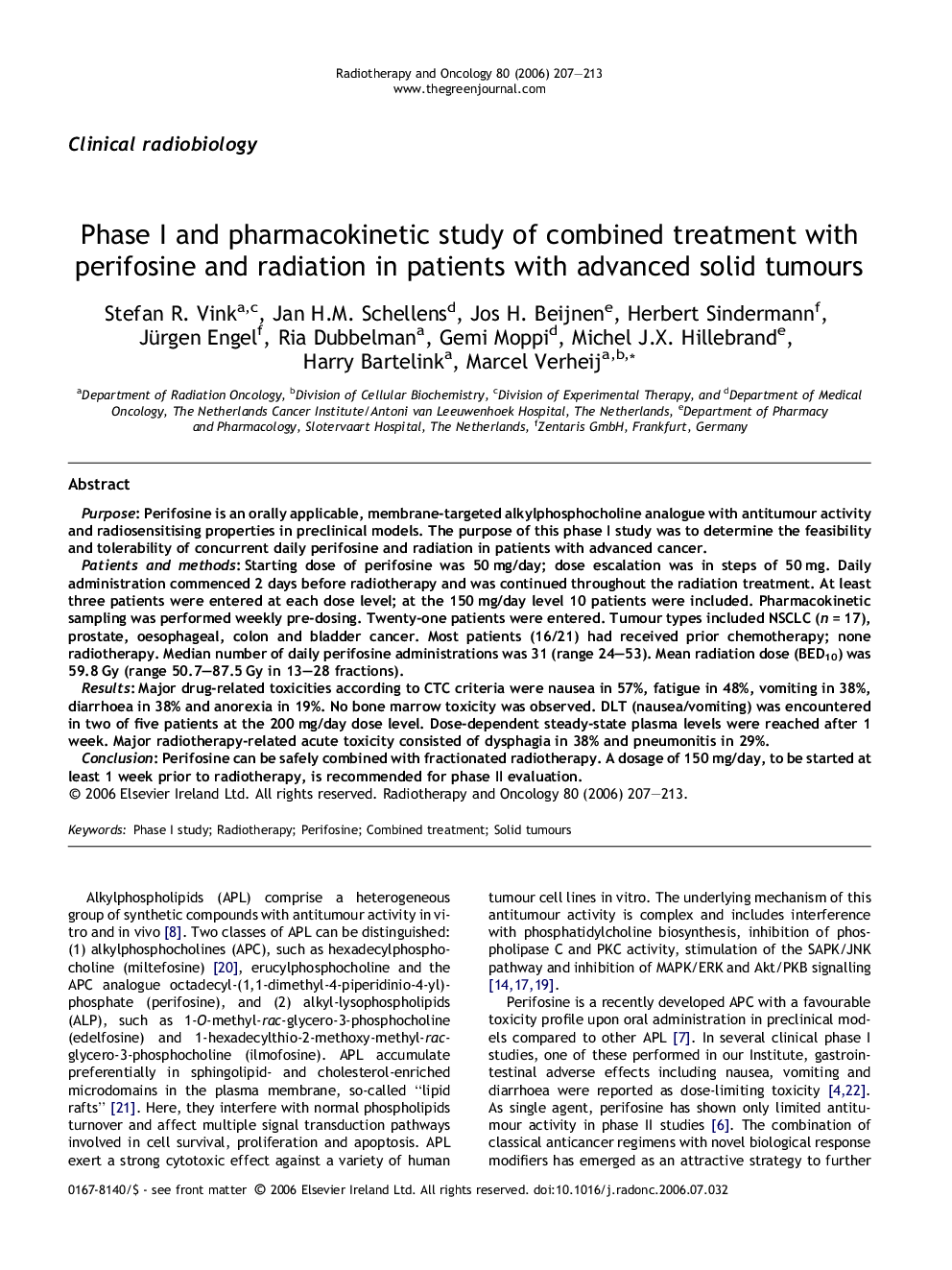| Article ID | Journal | Published Year | Pages | File Type |
|---|---|---|---|---|
| 2161325 | Radiotherapy and Oncology | 2006 | 7 Pages |
PurposePerifosine is an orally applicable, membrane-targeted alkylphosphocholine analogue with antitumour activity and radiosensitising properties in preclinical models. The purpose of this phase I study was to determine the feasibility and tolerability of concurrent daily perifosine and radiation in patients with advanced cancer.Patients and methodsStarting dose of perifosine was 50 mg/day; dose escalation was in steps of 50 mg. Daily administration commenced 2 days before radiotherapy and was continued throughout the radiation treatment. At least three patients were entered at each dose level; at the 150 mg/day level 10 patients were included. Pharmacokinetic sampling was performed weekly pre-dosing. Twenty-one patients were entered. Tumour types included NSCLC (n = 17), prostate, oesophageal, colon and bladder cancer. Most patients (16/21) had received prior chemotherapy; none radiotherapy. Median number of daily perifosine administrations was 31 (range 24–53). Mean radiation dose (BED10) was 59.8 Gy (range 50.7–87.5 Gy in 13–28 fractions).ResultsMajor drug-related toxicities according to CTC criteria were nausea in 57%, fatigue in 48%, vomiting in 38%, diarrhoea in 38% and anorexia in 19%. No bone marrow toxicity was observed. DLT (nausea/vomiting) was encountered in two of five patients at the 200 mg/day dose level. Dose-dependent steady-state plasma levels were reached after 1 week. Major radiotherapy-related acute toxicity consisted of dysphagia in 38% and pneumonitis in 29%.ConclusionPerifosine can be safely combined with fractionated radiotherapy. A dosage of 150 mg/day, to be started at least 1 week prior to radiotherapy, is recommended for phase II evaluation.
